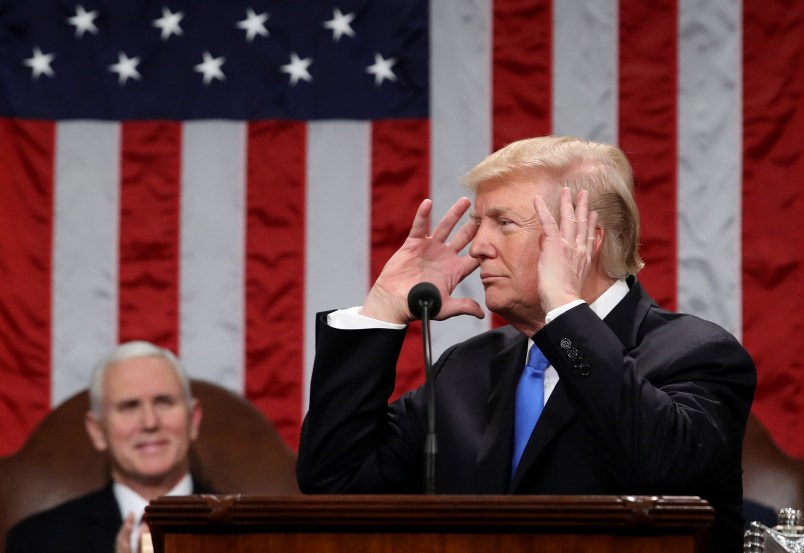What to make of this speech? I found it fairly conventional as Trump speeches go. In fact, in structural terms it was pretty conventional in general terms too. The first half of the speech – as I noted below – was a fairly standard recitation of President Trump’s goals and accomplishments aimed mainly at his core supporters and mainly focused on economic issues. At the level of structure, it was much like many State of the Union addresses in recent decades.
Every President accentuates the positive and takes some credit for the sun’s rising. President Trump takes this to a wildly greater degree, freely making baseless claims and inane boasts. It creates a wildly monochromatic vision of Trump’s presidency and what preceded it. Statements like this are representative: “Our nation has lost its wealth, but we’re getting it back so fast.”
The country was literally falling apart, slipping into anarchy. But now everything is getting better. In fact, it’s better than it’s ever been. There’s a not terribly fine line between conventional boosterism and banana republic style strongman nonsense. Trump spent most of his time past that line.
But at roughly the halfway point Trump shifted gears, both in tone and subject matter. Immigration, unsurprisingly, was the pivot point. As Trump has done for more than two years, he calls on us to see undocumented immigrants through the prism of horrifying and vicious murders. This is nothing but the most elemental kind of incitement. If you did the same – and you could – with any racial or ideological or regional identity the horror of this would be clear. But we treat it as normal now.
It’s important to restate the facts. Out of more than 10 million undocumented immigrants in the country, of course there are some who commit crimes and even horrific crimes. The same would be the case for any other ten million people, certainly for any group that is disproportionately young. But every study shows that immigrants, both documented and undocumented, commit crimes at a low rate than the native born. This is pure incitement. We can’t lose sight of that.
The rest of the speech was in this thematic path, aggressive ethno-nationalism. It wasn’t more or less outrageous than the things the President says all the time. It just stacked them together. The key theme is the extreme valorization of soldiers, police officers and immigration patrol officers as the central element of patriotism. Each of these are merited as part of a range of beliefs and values and commitments that make us American. Trump makes them central and almost sacral in a way that is at war with elemental American traditions, though we would be naive and dishonest to say his reactionary posture doesn’t also have deep roots in our history. We must remember both realities.
Trump is getting better at delivering speeches. But this is what we’ve been watching for going on three years. It’s the same man, the same no-end-in-sight national crisis. Tomorrow we’re back to the same chaos and unbridled mis-governance. I don’t think there’s much else to say.






